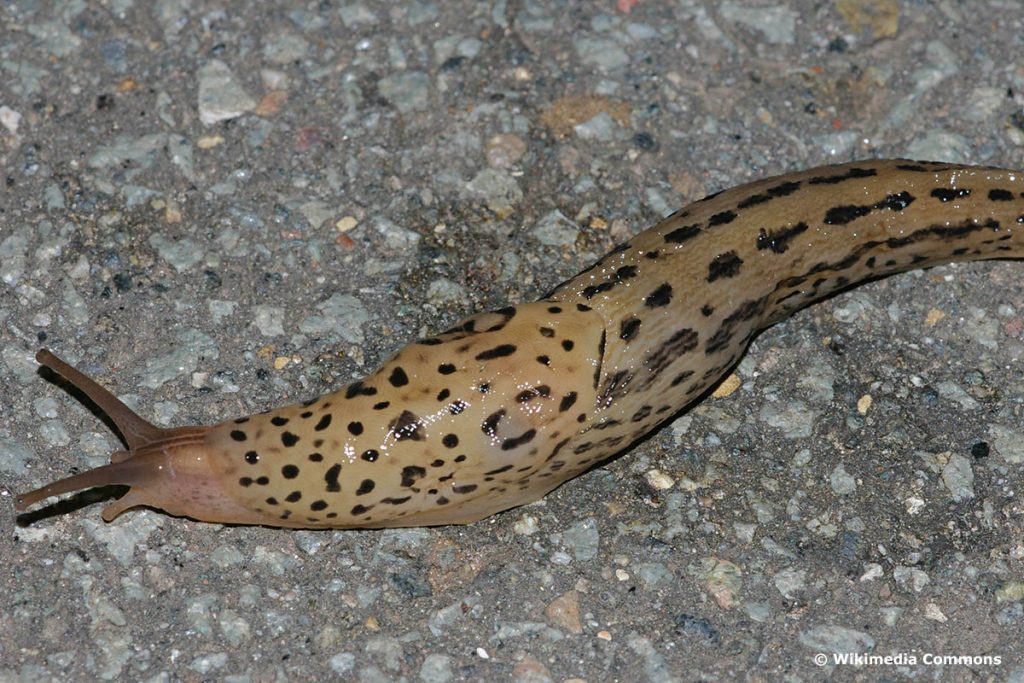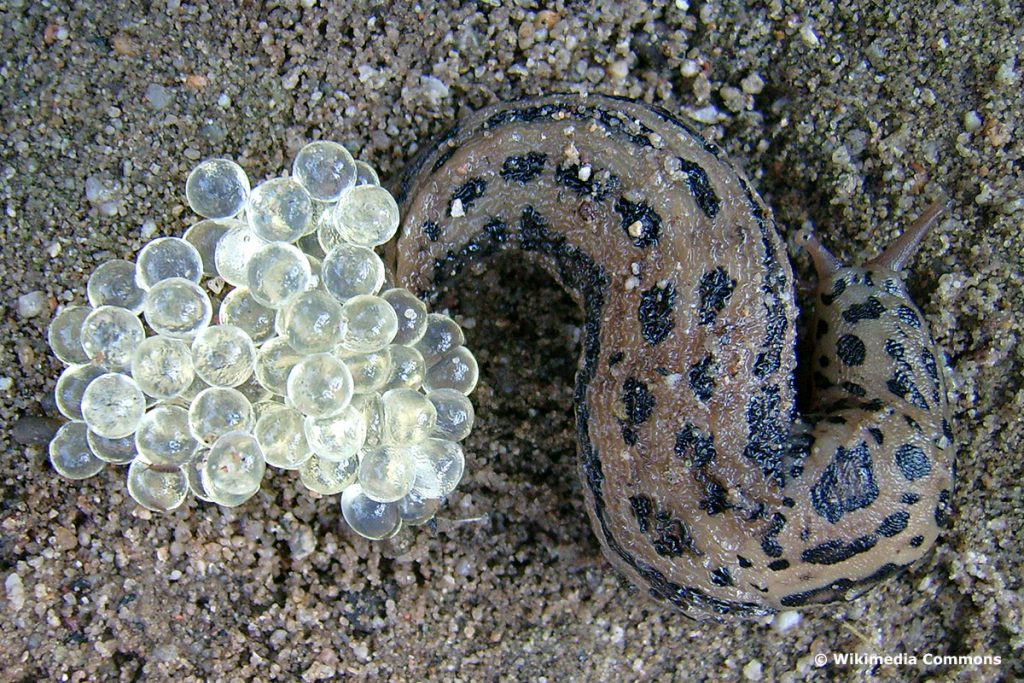Looks like a nudibranch, but not all nudibranchs are the same. The tiger slug is closely related to them and even eats them. More about this below.
To the point
- Tiger snail has eye-catching leopard patterning
- Size between 13 and 20 centimeters
- mollusk is nocturnal
- not poisonous
- useful garden helper against slugs and snails
Contents
Characteristics of the Tiger Slug
Tiger slugs (Limax maximus) are also known as tiger slugs, large slugs and large fluke slugs. Even though they are related to the harmful slugs, the large slug, it is easily distinguishable from them. The following characteristics are typical for the tiger snail:
- body length 13 to 20 cm
- slender, conical body shape
- rear third of the body known as the keel
- at the end of the keel ejection of defensive mucus in case of danger or threat
- light gray, light yellow or light brown ground color
- typical leopard pattern
- consisting of dark spots
- spots at the rear end changing into stripes
- different number of spots present
- also unicolored specimens possible
- mantle shield over one third of the body present
- serves to protect the internal organs
- 13 to 15 mm long calcareous plate contained in the shield
- is remnant of common snail shell
- on the right side of the body, in the back part of the shield dark bordered breathing hole
- between the midline and the edge of the shell 21 bi 26 furrows are visible
- strong antennae with eyes at the end
- soles cream colored

The tiger slug is a hermaphrodite, so each animal has male and female sex organs. During the day, these snails are hardly visible, they hide them in damp hiding places under stones, piles of leaves and wood or in the compost. They are nocturnal and leave their dwelling only at midnight. Only on rainy days they can sometimes be seen during the day. For locomotion they secrete colorless, viscous mucus, just like other snails.
Eggs & Juveniles
Each tiger snail lays eggs twice during its life. Once in the months of July/August and then again the following year in June/July. The eggs are distributed in two to four clutches with 100 to 300 eggs each and are
- crystal clear transparent,
- spherical to elongated in shape,
- in diameter 4 to 5 mm large.
The young hatch after three to four weeks, depending on the ambient temperature. Typical characteristics are:
- very small
- initially whitish in color and
- first spots and bands appear after one week
However, not all eggs and young survive. Often they fall victim to parasites such as flies, nematodes or mites. The animals are sexually mature at 1.5 years.

Note: Tiger snails should not be touched. They are not poisonous, but the mucus layer on the body can be destroyed. It serves as protection and defense against bacteria and germs. It also just causes the animals unnecessary stress.
Poisonous or not
From the tiger snail do not pose any danger to humans and pets. On the contrary, they are very useful in the garden, as they are real slug hunters. They need protein-rich food to become sexually mature, so they prefer to eat slugs and their eggs. Furthermore, their food spectrum includes:
- Carrion
- feces
- lichens and fungi
- dead plants
They not only decimate the dreaded slugs, but also decompose organic dead waste and fertilize the soil with their excreta. Consideration should therefore be given to not killing or scaring away these mollusks (mollusks), but rather attracting them to the garden.
Frequently asked questions
Where are tiger slugs found in winter?
Tiger snails are cold-blooded animals. During the cold season the snails reduce their metabolism. The heartbeat and breathing slows down, so the snail uses less energy until the next spring. In this winter torpor, these animals then hibernate in compost piles or under piles of leaves, wood or stones, even in damp cellars. Eggs laid in the fall can also survive the winter. In spring, when temperatures rise, they become active again.
What enemies can be dangerous to these slugs?
Slug pellets can put an end to these mollusks. But dusty and sandy environments are also dangerous for tiger snails. They need moisture. Then there are natural enemies like chickens, ducks, crows and songbirds. However, the latter can gum up their beaks because of the tough and foul-tasting mucus. Hedgehogs eat these snails only in emergencies when no other food is available.
Is it possible to breed tiger slugs by yourself?
Yes, in terrariums. However, these should then have a height of at least 50 centimeters, since the animals mate hanging from a slime thread about 40 centimeters long. The vessel should be lined with leaves of oak, chestnut or beech. Furthermore, they need a humidity of 90%, room temperature and protein-rich food such as moss, algae or potato, carrot or kohlrabi pieces.

